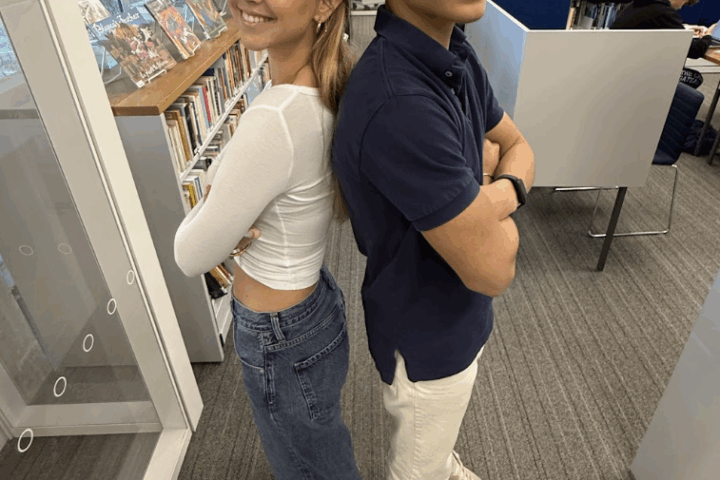Education during the age of Covid-19 has been a hot political football. It’s also become a case study in local politics and grassroots organizing. In December, as the surge of Covid infections in the United States became undeniable, many leaders throughout the country called for school closures.
Source: Hospitalization data from the Covid Tracking Project. Currently hospitalized is the number of patients with Covid-19 reported by states that are in a hospital on that day. Dips and spikes could be due to inconsistent reporting by hospitals https://www.nytimes.com/interactive/2020/us/coronavirus-us-cases.html
Mayor Bill De Blasio and New York City public schools initially chose to close the nation’s largest public school system. Since then, however, states such as New York have revoked those decisions because of large amounts of criticism they faced from parents and educators who pointed to significant data suggesting that infection rates and community spread between children, staff and parents are much lower compared to the numbers of cases outside the school community. “Over the past few months, the data has overwhelmingly supported that children are not a major source of spread in our schools. The state will not force New York City school buildings to shut down if the citywide coronavirus positivity rate exceeds 9%,” said Governor of New York Andrew Cuomo during his weekly briefing.
My aunt, Michelle Naylor, a full time English teacher at PS. 154, in Ridgewood, Queens, and the parent of a public school student, discussed the balance of guiding her sons through their zoom classes as almost an impossible task to manage. “I feel as if there aren’t enough hours in the day. It’s impossible to help my five year old son get on his Zoom classes on time [and] complete every assignment/homework while balancing my own instruction of my high school students,” said Naylor. She continued, “my older son, Trevor (6th grade), has significantly suffered from online learning and benefits tremendously from being at school. At night he gets so overwhelmed and can’t fall asleep.”
Updated CDC reports show that students between grades 3 and 10 scored lower in national percentage rankings compared to last year. In particular, students in low income schools scored significantly lower than previous years, especially in elementary school grades when compared to average or higher income households. The massive disruption from school — not to mention mounting evidence that kids and their parents are increasingly experiencing depression, anxiety and trauma during the pandemic — is causing students, such as Trevor, to experience devastating impacts for years to come.
Naylor said, “I also know that my child is still so fortunate to have someone to help him navigate technology let alone have access to technology at all. There are still over 6,000 students who don’t have any means of access to Wifi or teach services.”
Naylor also discussed her experience working in a large Facebook group effort to protest Mayor Bill Deblasio’s decision to close schools due to the statewide positivity rate. They spent hours analyzing the data to conclude how states are able to determine the exact infection rate for a school shutdown. Naylor said, “it is not specifically outlined clearly, as each state appears to arbitrarily derive their new threshold of positivity rates for closing schools. New York City for example has declared that schools might close if positivity rates reach 3 percent, while cities such as Chicago and Los Angeles have much higher thresholds, leaning closer to 10 percent.”
Naylor worked closely with other parents to put pressure on the Mayor’s office to reverse the decision on in-person learning, given countless infectious disease experts disagreed with this decision. She discussed the coalition of parents and how they focused their advocacy efforts towards children for whom in-person learning is not only a lifeline, but also essential. “Schools are not simply just for education. They are how thousands of children receive their meals and are critical to childcare services for families. Keeping my own children home is nevertheless challenging, but for so many families across the country this is detrimental,” said Naylor.
Her work continued to outline the importance of safety and advocated the essential focus of ‘risk vs reward.’ “All of us here take this virus very seriously. We have seen the impact and understand the data and the numbers centered around schools and children. We also understand the impact on faculty and teachers and never want to create an environment where anyone is forced to be in-person or feels uncomfortable. On the other hand, in-person teaching is essential to our kids, and the mayor’s decisions are outrageous considering [that] the research proves that almost always children (K-8) are not creating an environment for a super spread event,” said Naylor.
In the end, the Mayor decided on only sending back half the kids, kindergarten through fifth grade and district 75. However, Naylor writes, “we’re hugely grateful for that. But it’s only 190,000 of the 335,000 kids that were eligible to return to school. This is a step in the right direction; however, there are still thousands of students that must return to the classroom.”
Tamara Bonilla-Rosa, a fifth grade teacher in Fort Lee, New Jersey and the mother of Narissa (Form V), also witnessed the struggle of many younger students’ engagement during online learning. “They are simply not engaged, sad, as their lives have been uprooted in ways that [they] clearly can’t comprend at the moment,” she said. Students often sent her emails in the early days of March and April asking “when we would go back to school or when life would transition back to normal.” In total, close to half of the student body in her classroom has dropped two levels in grade marks and attendance has been drastically reduced.
When speaking to other families in the district, Bonilla-Rosa noticed that, “this has been an extremely problematic factor for parents and students whose playbook for keeping schools safe has been widely misunderstood for several months. Data from top universities over the last several months have overwhelmingly leaned toward a conclusion that when appropriate safety measures are followed and put into place, the transmission level between abiding students and faculty is substantially low.”
“People from all across the city from all walks of life were coming up to us and saying, this is my story with my child and this is why it matters to me,” she said. There is no doubt that the mounting pandemic deaths and cases are alarming, but the decrease in the quality of education for students of all ages is also cause for alarm. “We must get our kids back to school,” said Bonilla-Rosa.





